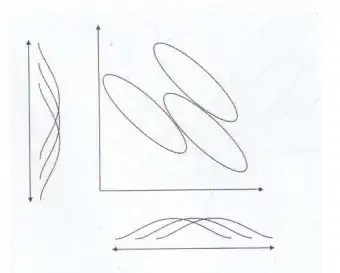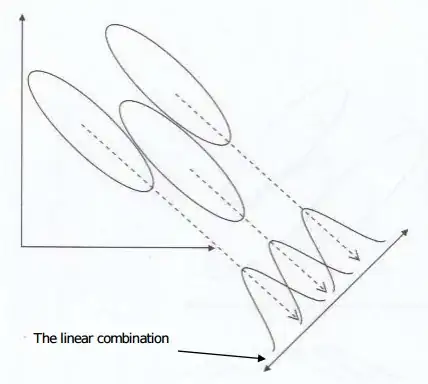What are the advantages of doing MANOVA of 2 response variables together rather than individual, separate analysis of response variables? What further information does it provide? Is it that the 2 sets of coefficients obtained from MANOVA are can be compared with each other and those from separate analysis cannot be?
For example in following example of a MANOVA:
num1 cat1 cat2 cat3 cat4 cat5 cat6 Residuals
resp 1 112900.5 1128.4 19600.3 12087.9 2235.4 2484.0 11311.4 880808.9
resp 2 19657.8 2408.9 12418.8 12593.0 7904.5 6684.0 20466.0 668647.0
P values for all of them are significant. Can we say that num1 and cat2 are more associated with resp1 while cat1, cat4 and cat6 are more related to resp2?
Coefficients from individual regressions are as follows:
for resp 1 (first response variable):
Residuals:
Min 1Q Median 3Q Max
-45.780 -7.218 -0.017 7.352 58.087
Coefficients:
num1 1.32594
cat1_level2 -0.83984
cat2_level2 -0.69621
cat2_level3 0.83189
cat3_level2 -1.57992
cat3_level3 1.29579
cat4_level2 0.54523
cat4_level3 0.28003
cat5_level2 0.60691
cat6_level2 -1.87730
cat6_level3 0.80736
for resp 2 (second response variable):
Residuals:
Min 1Q Median 3Q Max
-45.780 -7.218 -0.017 7.352 58.087
Coefficients:
num1 1.32594
cat1_level2 -0.83984
cat2_level2 -0.69621
cat2_level3 0.83189
cat3_level2 -1.57992
cat3_level3 1.29579
cat4_level2 -0.54523
cat4_level3 0.28003
cat5_level2 0.60691
cat6_level2 -1.87730
cat6_level3 0.80736
What would be the main advantage of MANOVA in this situation or others? Thanks for your insight.

